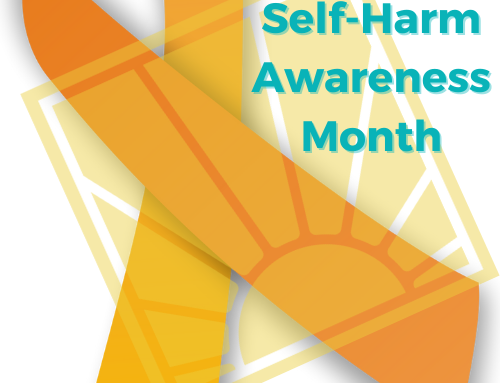With self-injury awareness day it is a great opportunity to educate. One author from Cornell University stated, “Self-injury is an overlooked public health issue”. It is critical to be aware of the impact and rampancy of the problem of self-harm. Self-harm “is defined as the intentional, direct injuring of body tissue most often done without suicidal intentions” The most common form of self-harm is cutting of the skin. It also includes behaviors such as burning, scratching, banging or hitting body parts or interfering with wound healing (2013).
One recent study at Cornell University gathered statistic regarding self-injury among adolescents and young adults. “The research team found 15.3 percent of the participants reported a history of self-injury, and 6.8 percent had self-injured within the previous year. Most of the students 86.4 percent who had self-injured had done so more than once, and nearly half 42.8 percent reported self-injuring more than six times. The average age for starting self-injury was 15.2 years of age.(Stark, 2013)”
Another study of adolescent age 15 to 16 in England found A lifetime history of deliberate self-harm was reported by 13.2% adolescents. Deliberate self-harm in the previous year was reported by 8.6% pupils, of whom 6.9% had carried out an act of deliberate self-harm meeting study criteria in the previous year. Of those who deliberately self-harmed 12.6% of cases of self-harm had resulted in presentation to hospital. In 45.0% of cases, the participants said they had wanted to die. The main methods used for deliberate self-harm were cutting 64.6% and poisoning 30.7%. Multiple acts of deliberate self-harm were reported by 54.8% participants who self-harmed. (Hawton, 2002)
It is important to know and understand the statistics regarding this issue. One must understand first that the problem exists and how prevalent the problem is. The study in England also found common risk factors associated with those who self-harm.
- Deliberate self-harm was less common in Asian than white females.
- Females living with one parent (whether or not with a step parent) had higher rates of deliberate self-harm.
- For both sexes, there was an incremental increase in deliberate self-harm with increasing consumption of cigarettes or alcohol and a number of times drunk (especially in females).
- A higher frequency of self-harm was associated with all categories of drug use.
- Self-harm was more common in adolescents who had been bullied and was strongly associated with physical and sexual abuse in both sexes.
- Awareness of recent self-harm by peers was reported more often by females than by males but was associated with self-harm in both sexes.
- A similar association was found with self-harm by family members.
- Pupils of either sex who had recently been worried about their sexual orientation had relatively higher rates of self-harm.
- Levels of depression, anxiety, impulsivity, and self-esteem were all associated with self-harm in both sexes.(Hawton, 2002)
One study also found that “close to a quarter of the students with a history of self-injury indicated that no one knew about it. Even among those who had attended therapy for any reason, only about 17 percent had disclosed their self-injury to a health care provider (Stark,2013).”
Parents, providers and those who work with adolescent need to know the warning signs associated with self-harm. These warning signs include
- Unexplained wounds or scars from cuts, bruises or burns, usually on the wrists, arms, thighs or chest.
- Blood stains on clothing, towels or bedding; blood-soaked tissues. Sharp objects or cutting instruments, such as razors, knives, needles, glass shards or bottle caps, in the person’s belongings.
- Frequent “accidents.” Someone who self-harms may claim to be clumsy or have many mishaps in order to explain away injuries.
- Covering up. A person who self-injures may insist on wearing long sleeves or long pants, even in hot weather.
- Needing to be alone for long periods of time, especially in the bedroom or bathroom. Isolation and irritability. (Stark, 2013)
Understanding the prevalence of self-injury, the risk factors associated with self-injury and the warning signs will further help parents, providers and those associated with helping adolescents and young adults.
—
By Brad Simpson, LCSW, Executive Director of Sunrise Residential Treatment Center
References
Making Sense of Cutting and Self-injury by Roger Stark
Keith Hawton, Karen Rodham, Emma Evans, Rosamund (2002). Deliberate self harm in adolescents: self report survey in schools in England.

